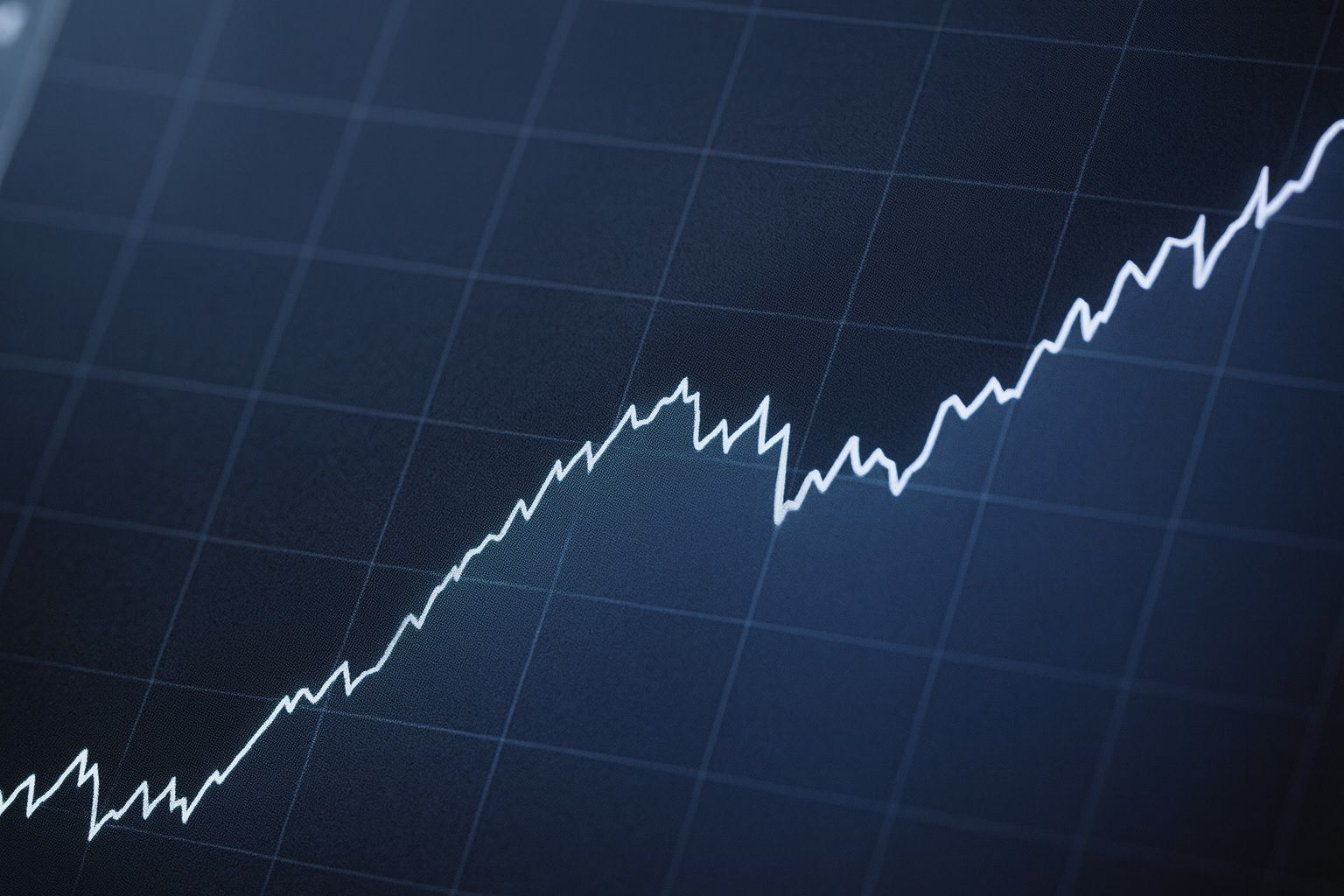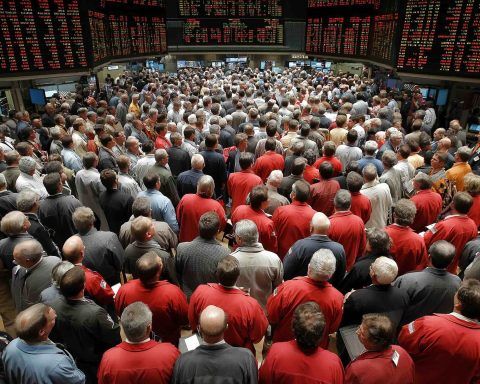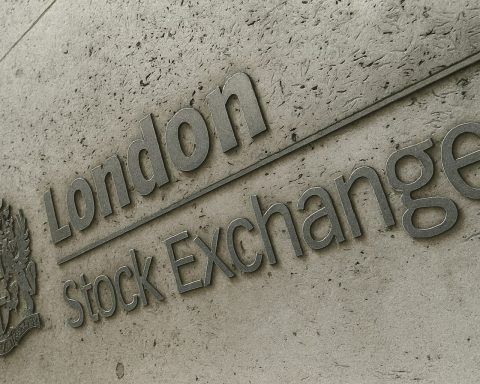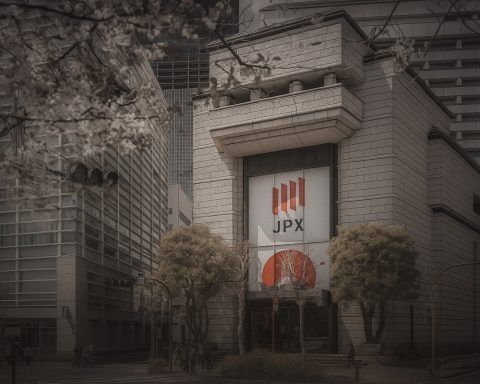On November 16, 2025, prediction markets hit the mainstream, from CBS’ Sunday Morning and Financial Times op-eds to NHL and UFC deals, Wall Street money and new rules. Here’s how Kalshi, Polymarket and rivals are reshaping online betting, finance and even democracy.
On Sunday morning U.S. TV, Times Square billboards and Wall Street trading floors, the same question is suddenly everywhere: Wanna bet?
CBS News’ Sunday Morning devoted today’s cover story to the rise of online prediction markets like Kalshi and Polymarket, featuring users who “monetize their knowledge” by trading on everything from elections and sports to Taylor Swift’s hypothetical bridesmaids. [1]
At almost the same time, the Financial Times published a widely discussed column — “A new spectre looms over democracy: prediction markets” — warning that political betting platforms now beam real‑time election odds onto giant digital billboards and may quietly tilt voter perceptions. [2]
Add in fresh deals with the NHL and UFC, a new wave of regulation, and billions of dollars from the likes of Intercontinental Exchange and DraftKings, and November 16, 2025 feels like a tipping point for the prediction‑market industry.
What Exactly Are Online Prediction Markets?
Prediction markets are platforms where people trade contracts whose payoff depends on whether a future event happens — a binary yes/no on questions like “Will the government shutdown end by November 15?” or “Will Team X make the playoffs?” [3]
- If you think the event will happen, you buy “Yes” shares.
- If you think it won’t, you buy “No” shares or sell “Yes.”
- Prices (often between $0 and $1) translate directly into implied probabilities — a contract trading at $0.73 suggests a 73% market-implied chance.
In the U.S., many of these “event contracts” are regulated by the Commodity Futures Trading Commission (CFTC) as a form of derivatives trading, particularly on fully regulated exchanges like Kalshi. [4]
Others, like Polymarket, use crypto and smart contracts under a hybrid structure, pairing on‑chain trading with licensed entities to fit into U.S. rules. [5]
From Niche Hobby to Sunday Morning TV
Today’s CBS segment marks a real mainstream moment. The piece highlights how Kalshi went from an obscure exchange to a platform that, according to its founders, now sees around $1 billion in trades each week, with markets spanning politics, sports, macro data and pop culture. [6]
A few key milestones explain how we got here:
- Election calling & credibility – CBS notes Kalshi “called” the 2024 U.S. presidential election well before TV networks, cementing the view among fans that prediction markets can be better than polls at aggregating information. [7]
- Explosive volumes – By October 2025, trading volume reportedly topped $4 billion on Kalshi and over $3 billion on Polymarket in a single month, reflecting both institutional and retail interest. [8]
- Lifestyle & influencer culture – CBS followed livestreamers who treat markets as both content and income stream, selling the idea that you can “monetize your knowledge” on everything from UFC fights to Taylor Swift rumors. [9]
Put simply: what used to be a nerdy corner of finance has become a consumer product — complete with influencers, apps and glossy TV coverage.
Sports Prediction Markets: From the NHL to UFC
If 2023–24 was about political and macro event contracts, 2025 is the year sports prediction markets burst into the spotlight.
NHL’s landmark Kalshi & Polymarket deals
On October 22, the NHL became the first major North American sports league to sign multiyear U.S. partnerships with prediction markets. Kalshi and Polymarket are now official prediction market partners of the league, gaining access to NHL data, marks and logos. [10]
ESPN emphasizes the key distinction: unlike traditional sportsbooks like DraftKings or FanDuel — which must navigate complex, state‑by‑state gambling laws — Kalshi and Polymarket operate as federally regulated exchanges and are already available in all 50 states, including places like California and Texas where sports betting remains illegal. [11]
That means fans in “no‑bet” states can still trade on questions like:
- “Will Connor McDavid score 50+ goals this season?”
- “Will the Rangers make the conference final?”
Not via a sportsbook, but via CFTC‑regulated event contracts.
UFC, PrizePicks and a growing ecosystem
The NHL deals are just one part of a broader wave:
- UFC x Polymarket – This week, Polymarket became the official prediction market of UFC, with a “Fan Prediction Scoreboard” planned for broadcasts to show live market probabilities during fights. [12]
- PrizePicks x Polymarket – Daily fantasy operator PrizePicks recently announced its own partnership with Polymarket to introduce regulated prediction markets, blending DFS mechanics with event contracts. [13]
Law firms and regulators are already calling sports prediction markets a “new legal battleground” as state gaming regulators argue that these products walk and talk like sports gambling, even when listed as derivatives on federally regulated exchanges. [14]
Big Tech, Wall Street and Media All Want In
If you only looked at today’s TV coverage, you might think prediction markets are just about pop culture bets. But the bigger story is who is backing them.
Google, Yahoo and the data layer
- Google Finance now pipes live prediction‑market data from Kalshi and Polymarket directly into its revamped, AI‑powered finance product, putting event probabilities next to stock charts and economic indicators. [15]
- Yahoo Finance has launched a dedicated prediction‑markets hub using Polymarket probability data, pairing odds on elections, policy and macro events with Yahoo’s news and analysis. [16]
This means forecasts like “odds of a Fed rate cut” or “probability of a government shutdown ending by a given date” are starting to appear alongside more traditional financial data.
Wall Street money: ICE, DraftKings, CME, Cboe
- Intercontinental Exchange (ICE) — parent of the New York Stock Exchange — plans to invest up to $2 billion in Polymarket in a strategic deal focused on tokenization and event markets, a move Polymarket’s CEO calls “a major step in bringing prediction markets into the financial mainstream.” [17]
- DraftKings has acquired Railbird Technologies and is preparing its own “DraftKings Predictions” app for regulated event contracts on “real-world outcomes across finance, culture and entertainment,” explicitly positioning the product against Kalshi and Polymarket. [18]
- FanDuel + CME Group are launching FanDuel Predicts in December, offering prediction markets on sports, crypto, oil, stocks and more — governed under CFTC rules rather than traditional sportsbook licensing. [19]
- Cboe Global Markets, operator of major derivatives exchanges, has signaled plans to launch its own prediction‑market offering within months, initially avoiding sports but targeting financial and economic events. [20]
Put together, the message is clear: whether you’re in crypto, traditional finance or fantasy sports, you’re expected to have a prediction‑markets strategy.
Politics, Shutdowns and “Tariff Dividend” Checks
Beyond sports, prediction markets are increasingly woven into political and policy reporting — including on today’s news agenda.
Government shutdown odds
During the ongoing record‑long U.S. government shutdown, prediction platforms became a leading indicator of how long the stalemate might last:
- In October, markets on Kalshi and Polymarket suggested the shutdown could drag about six weeks, well into mid‑November. [21]
- By November 11, Coindesk and other outlets noted that traders saw a 96% chance of the shutdown ending by mid‑month as a Senate deal emerged, even before a final resolution. [22]
Those probabilities quickly made their way into headlines and talking points for investors and policymakers.
Today’s “tariff dividend” question
This morning, a regional U.S. outlet asked another very 2025‑sounding question: Will Americans really get a $2,000 “tariff dividend” check floated in recent political rhetoric?
Bettors on Polymarket and Kalshi are, reportedly, deeply skeptical — pricing low odds that such checks materialize anytime soon. [23]
Even AI product launches get markets
Prediction markets now surface in tech coverage as well. Today, coverage of Google CEO Sundar Pichai’s comments about a possible Gemini 3 update highlighted that Polymarket contracts are already trading on whether the model launches next week, with odds fluctuating in real time as Pichai “keeps everyone guessing.” [24]
In other words, whenever there’s uncertainty — from fiscal policy to AI releases — prediction markets are increasingly embedded in how the story is told.
“A Spectre Over Democracy”: Political Concerns Go Mainstream
The FT’s opinion piece, also published today, captures a growing fear among political scientists and regulators: if you can see a candidate’s “market-implied win probability” on a 50‑foot billboard in Times Square, does that nudge you toward voting with the perceived winner — or staying home? [25]
Some key concerns raised by FT and other commentators:
- Manipulation & deep pockets – Wealthy actors could buy contracts to push odds in a certain direction shortly before an election, then use screenshotted “market odds” in persuasion campaigns. [26]
- Foreign influence & VPN workarounds – Even where platforms restrict U.S. political trading to certain jurisdictions, VPN use makes location controls porous, raising fears of foreign money shaping perceived probabilities. [27]
- Conflicts of interest – A Wired investigation noted that Donald Trump Jr. has financial ties to both Kalshi and Polymarket, while the Trump administration is viewed as friendlier to crypto and prediction markets — relationships critics say could blur the line between public policy and private profit. [28]
The rhetoric is sharpening: Singapore’s Straits Times echoed the FT today with its own editorial headlined almost identically — “A new spectre looms over democracy: Prediction markets” — emphasizing the risk that odds can shape narratives as much as reflect them. [29]
Truth Social’s “Truth Predict” and Polymarket’s Return
Politics and prediction markets are also colliding in a more literal way.
- Truth Social’s Truth Predict – President Donald Trump’s social platform is launching Truth Predict, a crypto‑based prediction market that will compete directly with Polymarket, allowing bets on politics, sports and economic indicators. [30]
- Polymarket’s CFTC‑blessed comeback – In September, the CFTC approved Polymarket’s return to the U.S. after a three‑year hiatus, following its acquisition of a licensed derivatives exchange and clearinghouse. Regulators also issued a no‑action letter easing some reporting requirements, signaling a new willingness to tolerate event contracts under the right structure. [31]
Supporters say these moves show that prediction markets are finally being recognized as legitimate financial infrastructure. Critics see them as “digital casinos” wrapped in regulatory arbitrage. [32]
Regulators vs. Exchanges: The Legal Battlefield
The biggest unresolved question as of November 16 is who gets to regulate prediction markets — the federal CFTC or state gambling authorities?
Federal vs. state power struggle
A detailed Reuters analysis describes how Kalshi has sued several U.S. states (including New Jersey and Nevada), arguing that the federal Commodity Exchange Act gives the CFTC exclusive jurisdiction over event contracts on designated contract markets. Kalshi has so far secured preliminary injunctions in some federal courts, while other states, like Maryland, have successfully resisted similar moves. [33]
Meanwhile:
- New York lawmakers have introduced a bill (A.B. 9251) to create a dedicated legal framework for prediction markets, empower the state attorney general and restrict certain kinds of contracts — particularly around elections and potentially harmful topics. [34]
- CFTC Advisory 25‑36, issued in September, and subsequent legal commentaries highlight ongoing state cease‑and‑desist actions and tribal lawsuits over sports event contracts, underscoring that “federally regulated” does not equal “conflict‑free.” [35]
Law firm analyses published this week frame the core question bluntly: Are these things sportsbooks in disguise, or commodity exchanges offering a novel but legitimate product? [36]
How Prediction Markets Differ From Traditional Sportsbooks
Despite the gambling‑style interface, there are important differences:
- Structure
- Sportsbooks: you place a bet against the house at fixed odds.
- Prediction markets: you trade contracts against other users; prices float via supply and demand, more like options markets. [37]
- Regulation
- Sportsbooks: licensed on a state‑by‑state basis under gaming laws.
- Prediction markets: on platforms like Kalshi, contracts are listed via self‑certification to the CFTC as event derivatives on a federally designated contract market. States argue that’s not enough when the events are sports games occurring in their jurisdictions. [38]
- Geography
- Many sportsbooks are unavailable in big markets like California, Texas or Florida due to state bans.
- Kalshi and Polymarket emphasize nationwide access (subject to nuances around specific contract types), making them attractive to leagues like the NHL seeking wider digital engagement. [39]
- Use cases
- Sportsbooks focus on entertainment betting.
- Prediction markets also cover elections, inflation prints, central‑bank policy, tech launches and more — blurring the line between hedging, speculation and information discovery. [40]
That blurred identity is exactly why regulators, investors and news organizations are all paying attention.
Why Everyone Suddenly Cares — And What to Watch Next
As of today, three threads tie the prediction‑market story together:
- Mainstream Visibility
- A CBS Sunday Morning cover story plus FT and Straits Times editorials mean prediction markets are no longer a niche crypto hobby; they’re part of public debate about democracy and money. [41]
- Institutional Endorsement
- The NHL, UFC, ICE (NYSE’s parent), CME, Cboe, DraftKings, FanDuel, Google and Yahoo Finance are all either partnering with or building prediction‑market products. That’s a huge endorsement of the format’s staying power. [42]
- Regulatory and Ethical Uncertainty
- Court cases, state bills and advisory letters show the rules are far from settled — especially for sports and political contracts. And with products like Truth Predict and Times Square election billboards, questions about manipulation and conflicts of interest are only getting louder. [43]
For individual users
For everyday traders enthralled by today’s coverage, it’s worth remembering:
- Prediction markets can be wrong, sometimes spectacularly, especially when liquidity is thin or information is stale. [44]
- Contracts on politics or volatile macro events can move sharply on rumors or breaking news.
- These platforms often carry complex terms, margin rules and, in crypto cases, smart‑contract and custody risks.
They’re a fascinating source of information — but they’re not magic crystal balls, and they’re definitely not risk‑free.
Quick FAQ: Prediction Markets in 2025
Are prediction markets legal in the U.S.?
Yes, but with caveats. Some platforms (like Kalshi) operate as CFTC‑regulated event‑contract exchanges. Political and sports contracts are under intense scrutiny, and several states are trying to restrict or ban them. Others (like Polymarket) have had to restructure to comply with U.S. derivatives rules. [45]
How accurate are prediction markets compared with polls?
Research and recent elections suggest that when markets are liquid and well‑designed, they can be at least as accurate — sometimes better — than polls at forecasting outcomes. But accuracy varies by event, and markets can be skewed by low liquidity or coordinated trading. [46]
Why are big exchanges and sportsbooks entering now?
Regulatory clarity is slowly improving; user interest has surged; and prediction data is useful for traders, advertisers and media. That combination has enticed ICE, CME, Cboe, DraftKings, FanDuel and others to jump in with major capital and partnerships. [47]
Will prediction markets change how elections are covered?
They already are. From FT’s “spectre over democracy” warning to CBS segments and Times Square billboards, market odds are increasingly treated as a real‑time gauge of political momentum. Whether that’s healthy is now a central question for regulators, journalists and voters alike. [48]
As of November 16, 2025, prediction markets sit at the strange intersection of finance, gambling, politics and tech. Today’s burst of coverage — from legacy TV to Big Finance and Big Tech announcements — suggests they’re not going away. The real question now isn’t whether people will bet on the future, but who controls the table, and under what rules.
References
1. www.cbsnews.com, 2. www.ft.com, 3. www.reuters.com, 4. www.reuters.com, 5. www.reuters.com, 6. www.cbsnews.com, 7. www.cbsnews.com, 8. www.ft.com, 9. www.cbsnews.com, 10. www.nhl.com, 11. www.espn.com, 12. sports.yahoo.com, 13. news.worldcasinodirectory.com, 14. www.reuters.com, 15. igamingbusiness.com, 16. www.yahooinc.com, 17. apnews.com, 18. www.investopedia.com, 19. coincentral.com, 20. www.bloomberg.com, 21. www.foxbusiness.com, 22. www.coindesk.com, 23. www.lansingstatejournal.com, 24. www.thestreet.com, 25. www.ft.com, 26. www.ft.com, 27. www.ft.com, 28. www.wired.com, 29. www.straitstimes.com, 30. www.wired.com, 31. www.reuters.com, 32. www.reuters.com, 33. www.reuters.com, 34. news.worldcasinodirectory.com, 35. www.cftc.gov, 36. www.jdsupra.com, 37. www.reuters.com, 38. www.reuters.com, 39. www.espn.com, 40. www.reuters.com, 41. www.cbsnews.com, 42. www.nhl.com, 43. www.reuters.com, 44. www.reuters.com, 45. www.reuters.com, 46. www.reuters.com, 47. apnews.com, 48. www.ft.com










